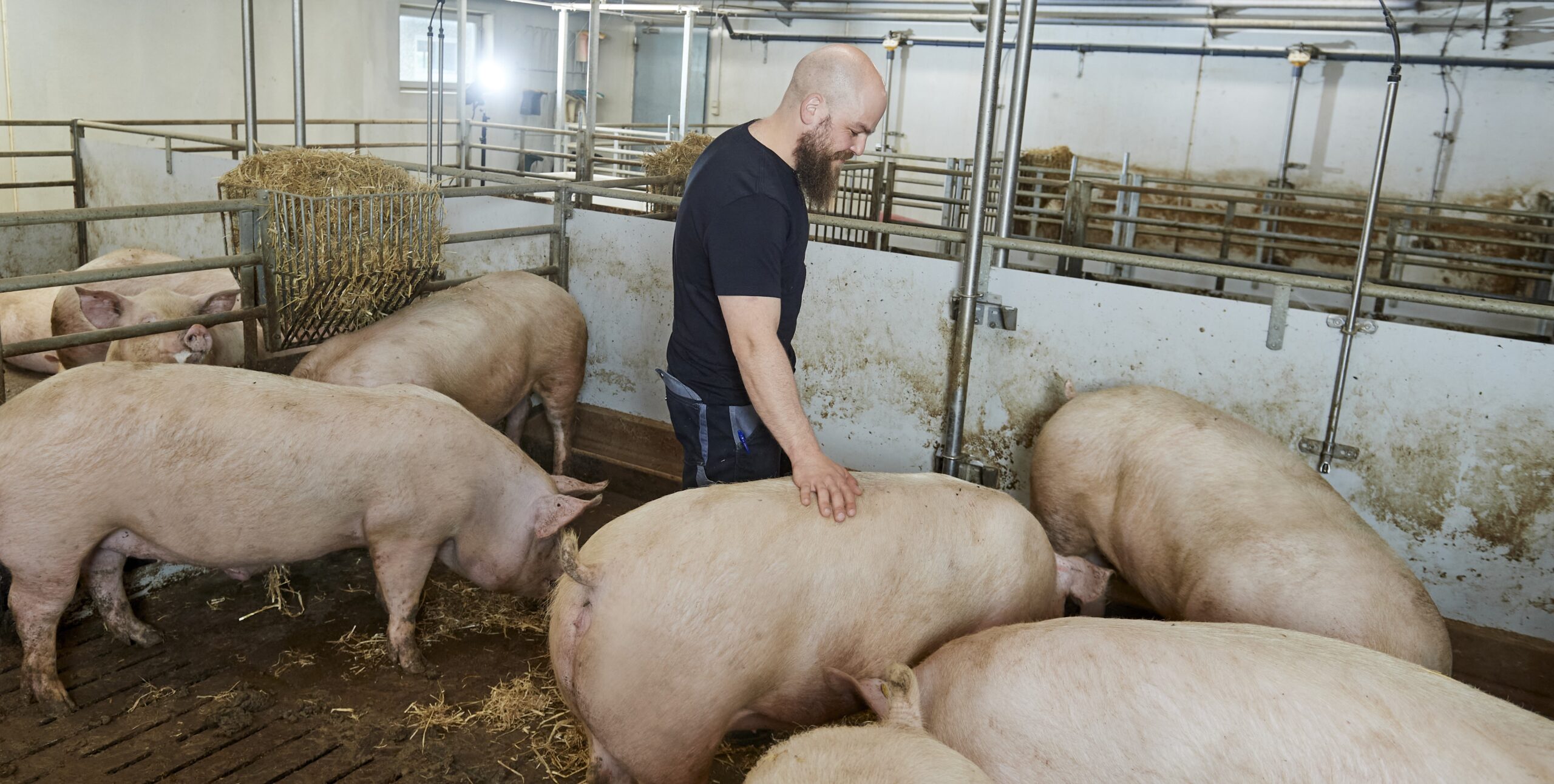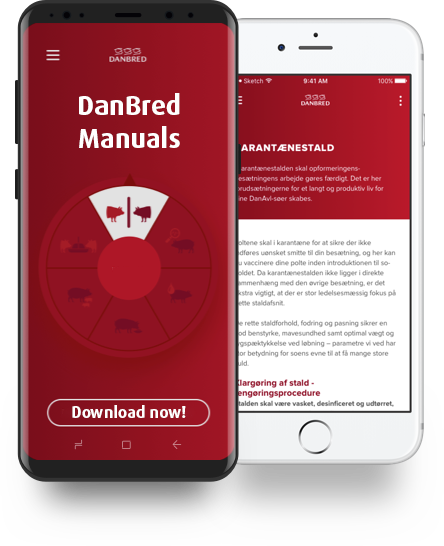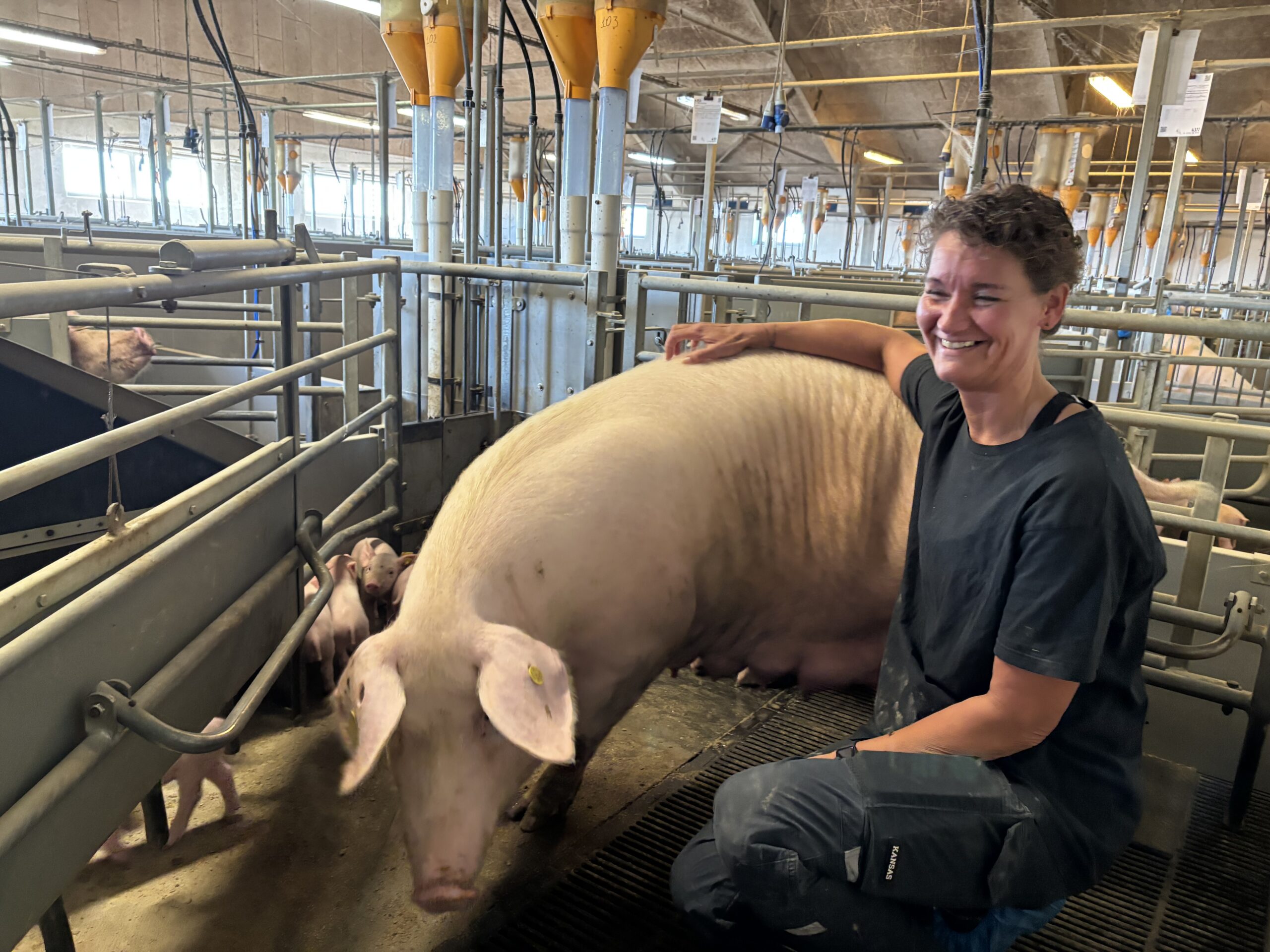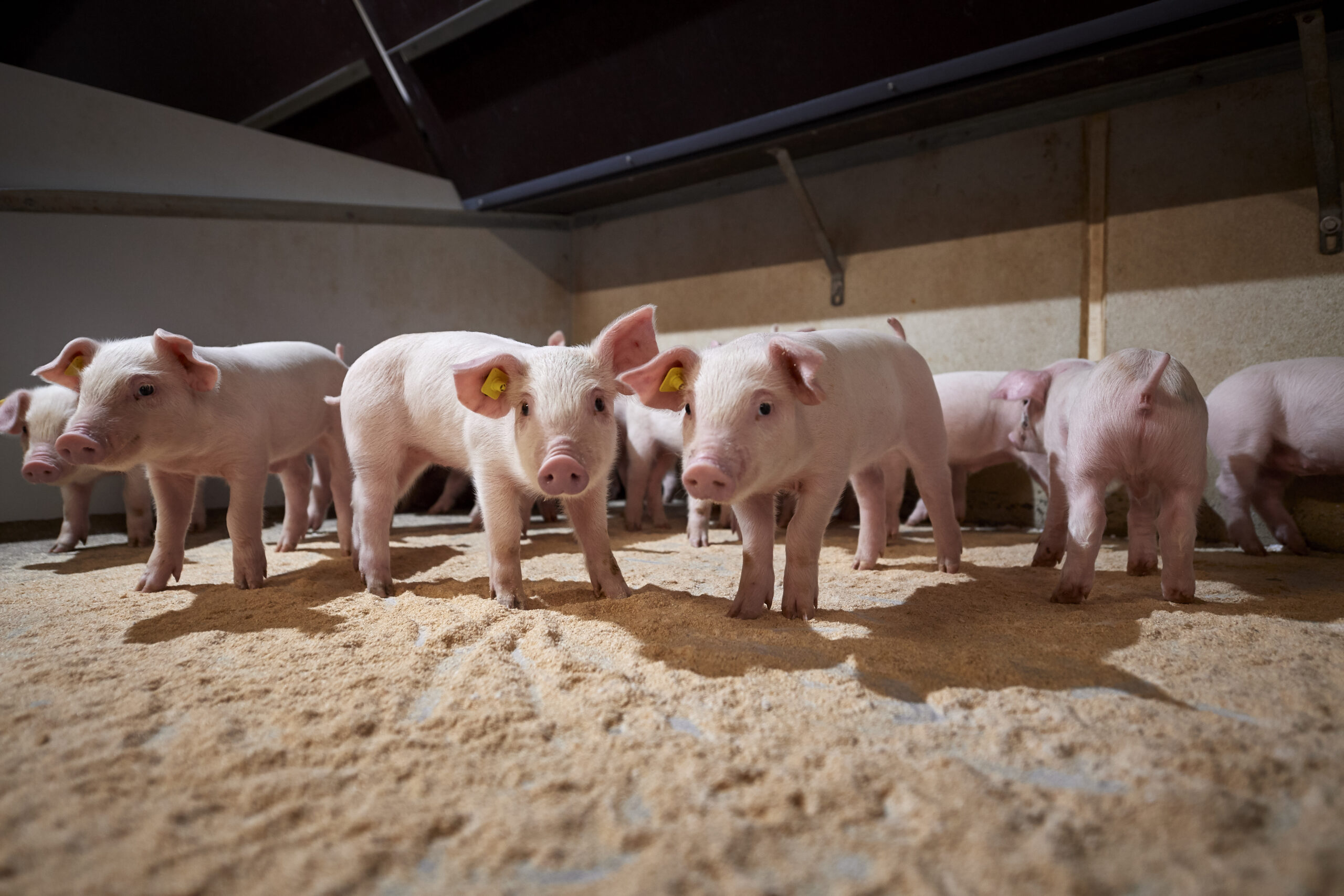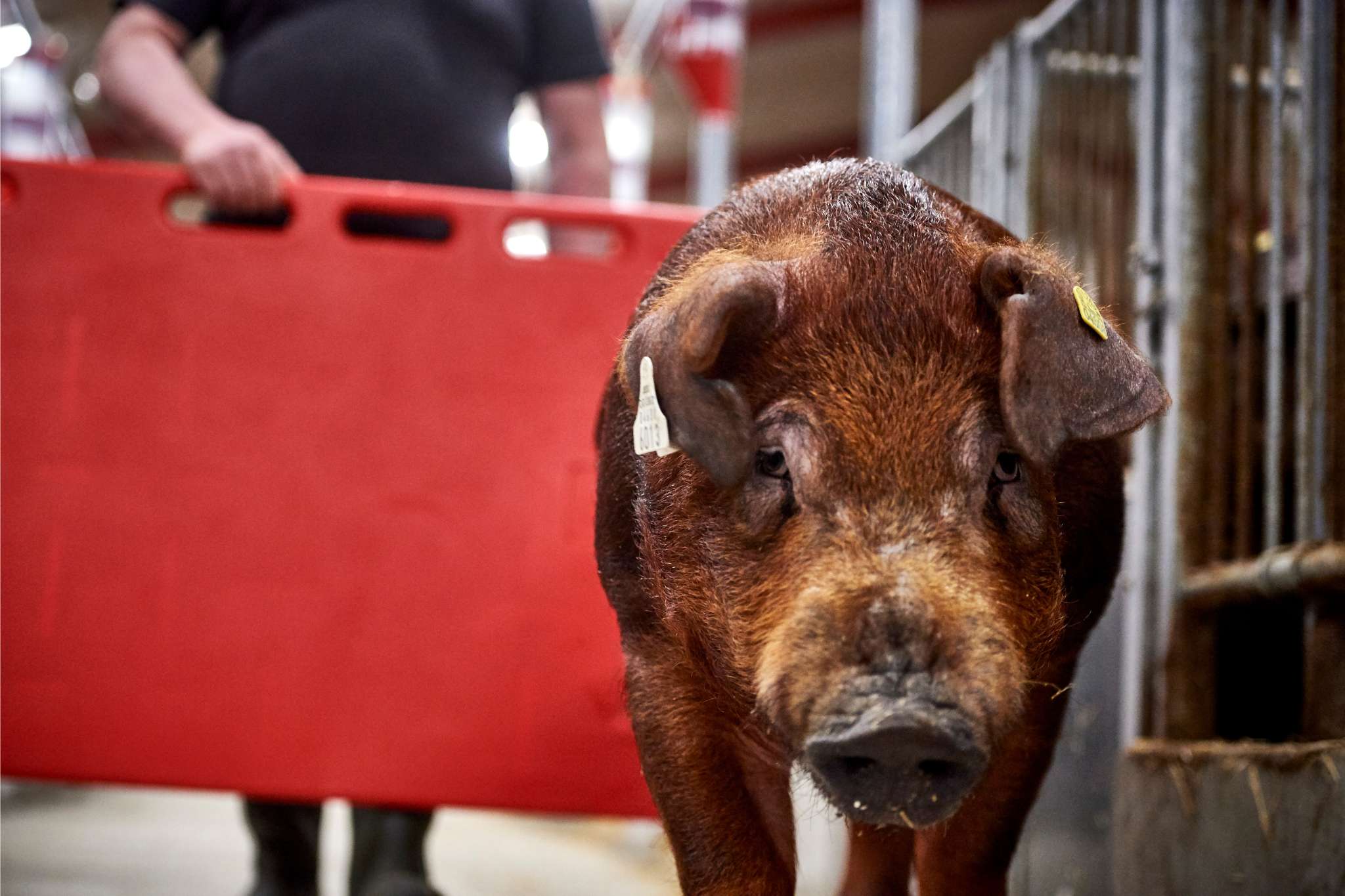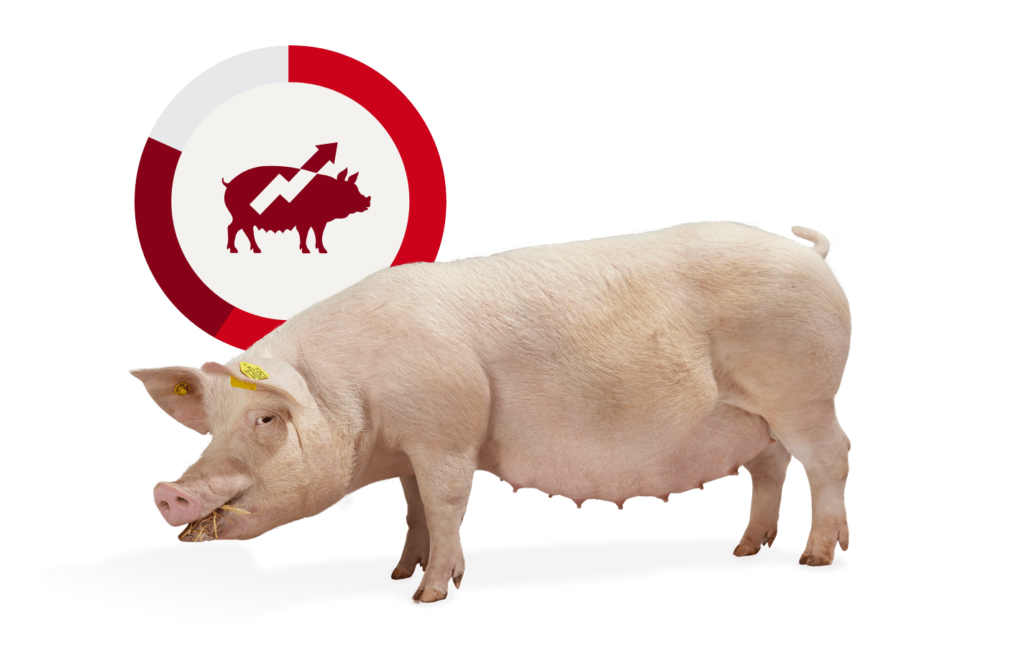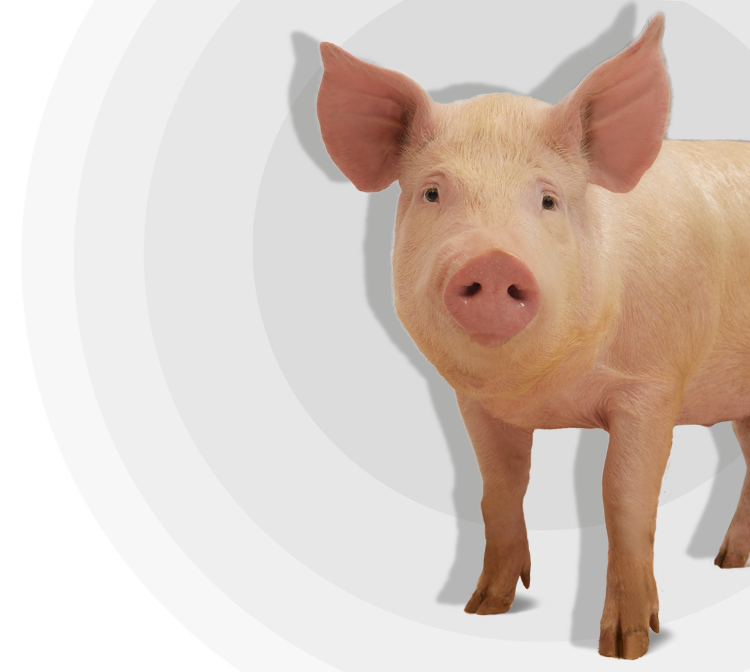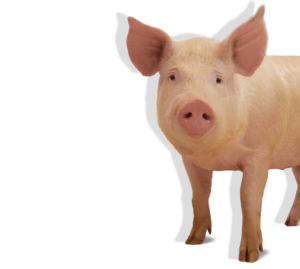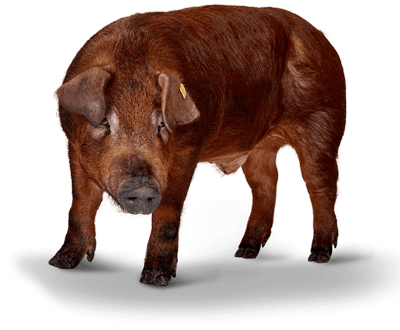One of the factors with the greatest influence on the quality of your gilts at mating is the feed. If your gilts do not get the right nutrition, it can affect their reproduction, strength, and longevity.
Feed and nutrition lay the entire foundation for your pigs’ growth and overall health. Therefore, your feed strategy should focus on optimal growth throughout their lives to ensure world-class pigs. SEGES Innovation recently launched the new recommendations for feeding of gilts, and these recommendations are based on the latest trials with DanBred pigs.
With the 5 tips below, you get an easy overview of the new recommendations for feeding gilts, so you can achieve optimal results in your herd.
1. Phase feeding gives the best results
Your breeding animals must be fed as breeding animals – not as finisher pigs. Feed for finishers or lactating sows contains too much protein for modern gilts, which can have major consequences for both longevity and reproduction. SEGES Innovation recommends phase feeding to increase back fat thickness without behavioural discomfort.
Naturally, the optimal strategy depends on what is physically possible on the individual farm. The recommendation from SEGES Innovation includes three phases: 30-85 kg, 85-110 kg and >110 kg.
2. New weight and age at mating
To ensure the best production results on both the short and long term, gilts should now be inseminated already when they are around 210-230 days (30-33 weeks) and weigh 150-165 kg.
The average daily growth should be 900 g from 30-140 kg. It has been shown to provide the best possible basis for long-term reproductive productivity.
3. Measure the backfat thickness
It is important for reproduction and longevity to reach the right backfat thickness throughout the gestation period. Set a target for backfat in the herd and do quality controls by weighing and measuring backfat regularly.
SEGES Innovation now recommends 13-15 mm backfat at mating.
4. Balanced lysine and protein levels
The right protein and lysine levels reduce the risk of e.g. tail bites. The new recommended feeding strategy helps to minimise the risk of negative behaviour, as the levels of protein and lysine are relatively high throughout the growth period up to 85 kg.
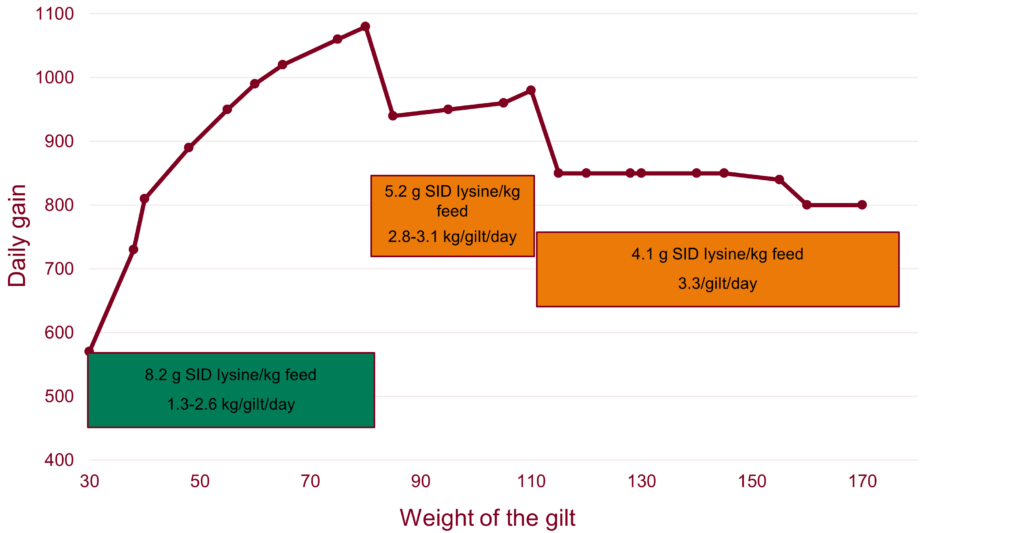
The levels are lower in the later feeding phases to ensure correct weight and backfat as well as good leg strength.
5. Restricted feeding ensures control
Gilts should be fed restrictively from approx. 30 kg, if your feeding facility makes this possible. It is the best way to control the daily gain and the increased backfat thickness.
If your feeding system is suitable for following the new recommended feeding curve, flushing is no longer necessary. If restricted feeding is not physically possible on the farm, low-protein feed is essential.
Unlock the full potential with the latest recommendations
DanBred’s continuous breeding progress ensures gilts with great potential for daily growth, who produce litters with many vital piglets. Thanks to the latest trait in DanBred’s breeding goal, sow survival, you can also benefit from more robust sows that are gentle and easy for the employees to care for.
The breeding progress also means that your gilts are evolving – and, therefore, the recommendations for e.g. feed strategy also evolve. So, you should always follow the latest recommendations from SEGES Innovation, as these have been developed on the basis of trials with DanBred pigs. That way, you can make the most of your gilts’ great potential and achieve the best results on your farm.
With these five recommendations, you are well on your way. And you can find even more practical recommendations for optimal handling of DanBred sows and gilts in our Sow and Gilt Manual.
Enjoy and keep up the good work!

